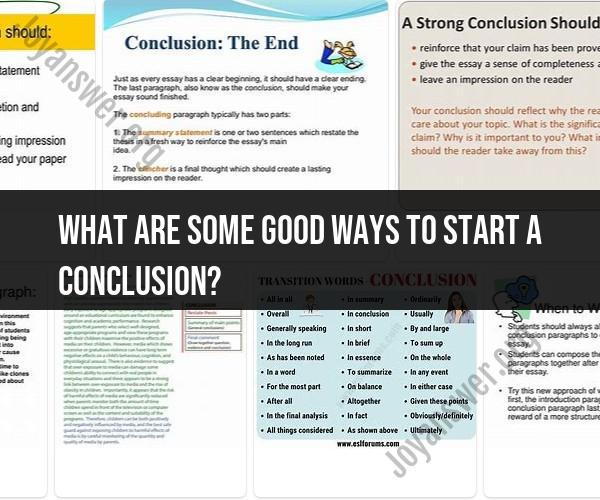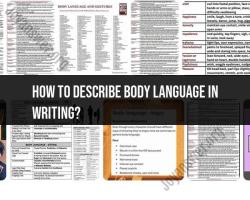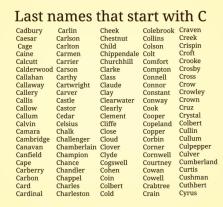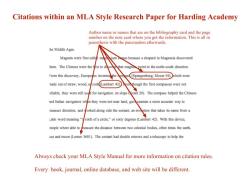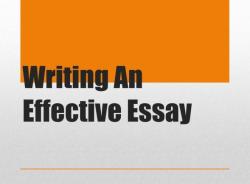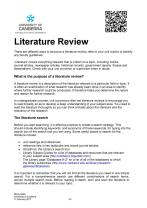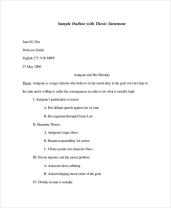What are some good ways to start a conclusion?
Crafting compelling conclusions is crucial to leave a lasting impact on your readers and tie together your writing effectively. Here are some effective ways to start a conclusion and create a strong finish to your piece:
1. Restate the Thesis or Main Point:
- Begin by succinctly restating your thesis or main point. This helps remind readers of your core message and reinforces the purpose of your writing.
2. Summarize Key Points:
- Summarize the main points you've discussed in your writing. Highlight the most important ideas and findings to reinforce your argument.
3. Pose a Thought-Provoking Question:
- Engage readers by asking a question that encourages them to reflect on the topic. This can stimulate further thinking and encourage them to consider the implications of your ideas.
4. Provide a Call to Action:
- Encourage readers to take a specific action based on the information you've presented. This can be a practical step, a change in mindset, or further research.
5. Offer a Solution or Recommendation:
- If your piece addresses a problem, propose a solution or provide a recommendation based on your analysis.
6. Use a Powerful Quote:
- Introduce a relevant and impactful quote that encapsulates the essence of your writing. Make sure it adds depth and resonance to your conclusion.
7. Share an Anecdote or Story:
- Narrate a brief anecdote or story that relates to your topic. Stories can evoke emotions and provide a relatable context for your conclusion.
8. Create an Image:
- Paint a vivid image or metaphor that reinforces your message and leaves a lasting impression.
9. Connect to the Beginning:
- Refer back to an element from your introduction to create a sense of closure and circularity.
10. Express Optimism or Concern:
- Convey a sense of optimism, hope, concern, or urgency based on the nature of your writing. Tailor your tone to match your message.
11. Offer a Final Insight:
- Provide a final thought, insight, or perspective that leaves readers with a new understanding or viewpoint.
12. Use Humor or Irony:
- Employ a touch of humor or irony, if appropriate, to surprise and engage readers while driving home your point.
Remember, the conclusion is your final chance to make an impact and leave a lasting impression. It should tie up loose ends, emphasize your main points, and provide a sense of closure. Choose an approach that resonates with your writing style and suits the tone and purpose of your piece.
